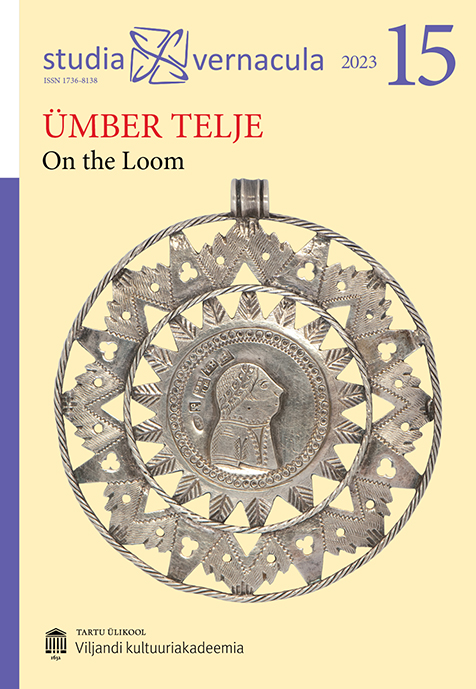Juustest ehted Eestis: museaalid ning kasutatud tehnikad / Hair jewellery in Estonia: museum objects and applied techniques
DOI:
https://doi.org/10.12697/sv.2023.15.88-119Abstract
The making and wearing of hair jewellery in the manner described in the article is a phenomenon that spread in Europe and North America between the second half of the 18th century and the early 20th century, with a peak in the second half of the 19th century. In the context of Romanticism and the Victorian tendency to open up the human emotional world, hair found its place as a valued material in the jewellery of the middle-class mourner, as in one who had recently lost a loved one. Over time, hair jewellery began to
transform into not just an expression of loss, but also simply a sign of longing and care. Not only did they adorn the wearer and preserve memory, but they also played an important role in demonstrating social relationships. The growing popularity of the tradition and its spread beyond the middle-class, brought changes both in the way jewellery was made and practised at home, as well as in its deeper meaning – it came to signify not only mourning, but also love and friendship.
This article introduces the hair objects preserved in the collections of Estonian museums, their wearers and makers, and briefly covers the technology behind their manufacture.
Since hair jewellery, or hair work, is a little-known craft in Estonia that can be studied mainly through artefactual sources and MuIS (Museum Information System, www.muis.ee) legends, the knowledge presented in the article is based more on my practice-based research than on the literature, focusing on the main question: what were hair jewellery and how were they made?
The main method I used was reconstruction, the first step of which presupposed a technique-based closer examination of the objects in the museums. On a temporal scale, this was followed by fieldwork in the Swedish settlement of Våmhus, where the tradition of hair braiding has survived unbroken to the present day. The collected information became the basis for experimentation to identify pattern algorithms and technical methods for the production of complete pieces.
According to the data I have collected, there are 132 hair objects in Estonian museums, in the following types: pocket watch chains, necklaces, bracelets, bonnets, brooches, earrings, a ring, a wreath, and a hair decoration. Of all the plaited objects, the pocket watch chains are by far the most common items, with a total of 68 in museums, showing that this type of object was the most widely used in Estonia.
Both men and women wore pocket watch chains and, as in the rest of Europe, it was common in Estonia to give hair braids to the opposite sex as a token of affection, which is confirmed by the notes recorded during the collection of the objects.
In MuIS, the accompanying legends of the hair objects mention 39 different place names as their place of origin, which shows that the jewellery was spread almost everywhere in Estonia. The exception are the Estonian islands, where during the process of information gathering I received only one positive response, which suggests that the wearing of these jewellery items did not reach similar popularity as on the mainland.
According to English-language sources, hair jewellery making has been historically divided into four different techniques: table work – braids made by lifting bundles of hair on a braiding stand, plate work – making shapes from hair by moulding them into the appropriate position and gluing them to the jewellery, hair painting – painting pictures from ground hair mixed with glue, e.g. on ivory or porcelain jewellery, and fourth, hair-wrapped wire, i.e. moulding elements from hair braided with wire and making ornaments from them. Due to the lack of Estonian-language terminology, there was a practical need for vocabulary to describe everything involved. I started by creating a typology of the different patterns as a result of the observation of museum objects, on the basis of which I divided the patterns into six techniques, denominating them based on visual information. Patterns used in the braiding of the museum objects are mainly defined as table work, and they are the result of the interchanging of hair bundles on a braiding chain (the author’s term to distinguish between braiding stands of different shapes and functions from a circular rotating tool).
Hair braiding technology offers abundant possibilities of pattern and form for making a variety of objects, resulting in a unique and subtle visualeffect and adding a very personal layer to an object with its uniqueness of material choice. At the same time, it is possible to accommodate the techniques used to a wide range of materials, achieving a completely different and innovative result with the same methods.
Keywords: handicraft, braiding, hair work, hair jewellery, table-work

